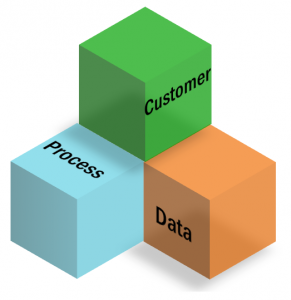Any aspirant preparing for Lean Six Sigma Certification Exams of ASQ or IASSC, it is important for you to understand the difference between CTQ, Primary Metric and Secondary Metric.
In Lean Six Sigma, the term CTQ is very commonly used. CTQ is an acronym Critical to Quality. As the name suggests, any attribute, parameter, factor or metric that is critical to the quality of the product or service you are offering to your customers can be considered as CTQ.
One important element of CTQ is that it should be measurable, directly or indirectly. As we all know, anything that cannot be measured, cannot be achieved. More or less, it is difficult to maintain the desired level of quality for any product or service, if an important or critical attribute is not measured.
In the context of improvement projects in Lean Six Sigma, using the framework of DMAIC, the objective of such projects will be for Lean Six Sigma Green Belt or Lean SIx Sigma Black Belt will be to improve a given CTQ. For example, if on time delivery could be a CTQ for the business because the customer wants your products or service on-time. Thus CTQ emanates from the customer. There are usually many CTQs for any product or service. But the DMAIC Project will have to focus on improving only CTQ at a time. Especially the one which is not performing up to the mark, as desired by customers. This becomes the primary metric of the project. In this example, On-time delivery could be a Primary Metric. The purpose of the project will now be fully aligned to improve this primary metric.
If that is the primary metric, the question we need to answer is what is a secondary metric in a Lean Six Sigma Improvement project? To understand how to identify secondary metric, we will take a step back and talk about the purpose of improvements in using Lean Six Sigma or any other structured problem solving approach.
Purpose of Using Structured Framework like Lean Six Sigma DMAIC for Problem Solving
There are many benefits of using such a framework, but come to the most pertinent point. Any improvement that is brought about by compromising or reducing the performance of any aspect of the business, product or service is not real improvement. It is mere optimization and doesn’t need problem solving skills. For example, if one adds more employees, equipment or cost to reduce the on-time delivery, that isn’t true improvement.
Hence we will need to ensure that Cost of Servicing and Quality of Service does not deteriorate as we try to improve On-time delivery.
These become Secondary Metrics for the project. Thus Secondary Metrics are those parameters or CTQs that will be monitored and sustained at current level, as we try to improve the primary metric. Secondary Metrics are also called Consequential Measures or Counter-measures.
While any DMAIC project should ideally have only one Primary Metric, it can have as many secondary metrics. All secondary metrics will be monitored and throughout the project, care will be taken to ensure there are no side effects on the Secondary Metrics as a result of any improvement in Primary metric.
The best way to identify secondary metrics will be through brainstorming. An alternate way would be to look for statistical relationships between various CTQs.
Tags
A matrix diagram, also called a matrix chart, is a management and planning tool used for identifying relationships between two to four groups of elements or among elements in a single group. The elements in different groups are placed in rows and columns and relationships among them are analyzed by the team. Symbols indicating the strength of the relationships are then entered in the cell where the row and column of the two elements intersect. If there is no relationship, then it is left blank. Because matrix diagrams help you analyze data, they are also extensively used in the Measure and Analyze phases of the DMAIC methodology.
- Relationships among different sets of items by comparing them, especially many-to-many relationships among them instead of one-to-one relationships.
- The strength of the relationship between different sets of items qualitatively.
- And, the success of a process that generates one set of items from another set of items.
Tags
DFSS and DMAIC are two of the methodologies commonly used by organizations to implement. Six Sigma. Organizations with well-developed Six Sigma programs also run DMAIC and DFSS projects concurrently.
| Feature | Description |
| Focus |
|
Tags
In the Define phase, the Six Sigma team in a software product development company found that customers identified many issues in the beta version of its software.
However, if all the issues raised were to be fixed, timelines would slip and the budget would increase. The team then calculated the number of changes and the time and budget required for fixing these issues in the Measure phase.
In the Analyze phase, the team determined if the changes were aligned with the scope of the project and then identified changes that should be made. It also identified conflicting changes pointed out by the reviewers, communication gaps between the developers and the customers, and ways in which changes were communicated to the developers as other major causes of the issues.
In the Improve phase, the Six Sigma team took several steps, such as determining the limitations of the software, having regular meetings with customers, identifying the appropriate application to communicate the changes to the developers, creating change requests, and monitoring the implementation of the approved changes until closure to eliminate the issues.
Finally, appropriate mechanisms were set up in the Control phase to monitor the regularity of meetings and communication between the developers and customers as well as to monitor the performance and usage of the change request feature.
Tags
If you are new to Lean Six Sigma then Y=f(X) is one amongst many jargons that you will have to familiarize yourself.
The objective of Lean Six Sigma philosophy and DMAIC improvement methodology is to identify the root causes to any problem and control/manage them so that the problem can be alleviated.
Six Sigma is process oriented approach which considers every task as a process. Even the simplest of the tasks, such as performing your morning workout or getting ready to office is considered as a process. The implication of such a view point is to identify what is the output of that process, its desired level of performance and what inputs are needed to produce the desired results.
Y is usually used to denote the Output and X for the inputs.
Y is also known as dependent variable as it is dependent on the Xs. Usually Y represents the symptoms or the effect of any problem.
On the other hand, X is known as independent variable as it is not dependent on Y or any other X. Usually Xs represents the problem itself or the cause.
As you will agree that any process will have at least one output but most likely to have several inputs. As managers, we all are expected to deliver results and achieve a new level of performance of the process such as Service Levels, Production Levels, Quality Levels, etc., or sustain the current level of performance.
In order to achieve this objective, we focus our efforts on the output performance measure. However a smart process manager will focus on identifying Xs that impact the output performance measure in order to achieve the desired level of performance.
How does one identify the input performance measures or Xs?
Six Sigma DMAIC methodology aims to identify the inputs(Xs) that have significant impact on output (Y). After that the strength and nature of the relationship between Y and Xs are also established.
Six Sigma uses a variety of qualitative and quantitative tools & techniques listed below to identify the statistical validation of the inputs (or root causes), their strength and nature of relationship with Y:
- Cause and Effect Diagram/Fish Bone diagram
- 5 Why Analysis
- Process Maps
- Histogram
- Descriptive Statistics
- Run Charts
- Normal Distribution Plots
- Box plots
- Stem and Leaf Plots
- Hypothesis Testing
- ANOVA (Analysis of Variance)
- Chi-Square Test
- 1-t Test
- 2-t Test
- Paired t Test
- Correlation
- Regression
- Scatter Plots
- Statistical Process Control (SPC)/Control Charts
What does f in Y= f(X) mean?
‘f’ represents the nature and strength of the relationship that exists between Y and X. On one hand, this equation can be used for a generic interpretation that symbolizes the fact that Y is impacted by X and nature of relationship can be quantified. On the other hand, such a mathematical expression can be created provided we have sufficient data using the above mentioned analytical tools such as regression and other hypothesis tests.
The mathematical expression that we obtain is nothing but an equation such as:
TAT = 13.3 – 7.4*Waiting Time + 1.8*No. of Counters – 24*Time to Approve
Once such an equation is established, it can be easily used to proactively identify the Y for various values of X. Thus Y= f(X) is the basis for predictive modeling. All the newer analytical concepts such as Big Data, etc are based on this foundation principles.
Tags
Define Phase is the first phase of Lean Six Sigma Project. Following are the deliverable of this phase:
- Develop the Project Charter
- Identify the Project CTQ
- Create Process Maps
Develop the Project Charter
Project Charter is an important document that summarizes the purpose, current scenario & goal, measures of success (CTQ), project’s scope, quantitative & indicative project benefits, and team members. This is the most important document, as it creates a term of reference for this entire Lean Six Sigma project. In order to prepare the project charter, several meetings and preparatory steps may be needed. In some cases, gathering the Voice of Customer (VOC) may be required to even understand the problem.
Project Scoping determines exactly how the project will contribute to overall business, whether the efforts will be diverted to maximum impact area, team composition, financial resources required, etc. In Six Sigma, a tool called ‘In-Frame Out-Frame’ is used to decide on the scope.
Six Sigma Green Belt should closely work with the Project Sponsor to complete the Project Charter.
Identify the Project CTQ
CTQ refers to Critical to Quality metric. This is a measure of success for the project. Usually, there is only one CTQ for DMAIC projects. It can either be a measure of efficiency or effectiveness. However, it is a key performance indicator for Voice of Customer or Voice of Business. Further, it should be measurable. Usually, its indicative or accurate current performance is reported in the project charter.
The above two deliverable run parallel, and they are of significant importance because they mark the formal kick-off of the project, team member induction, Lean Six Sigma training (if not included earlier).
Create Process Maps
In order to understand the end-to-end process; a detailed process document is created by the team. However, in case such documentation already exists, then it becomes easy for the project team members to revisit it.
Process maps can be either high level end-to-end process documentation such as SIPOC (Suppliers, Inputs, Process, Outputs & Customers), deployment process-charts which use Swim-lane technique or step-by-step process flow-chart. In some cases, just mapping the process itself can result in meeting the Lean Six Sigma project objectives!
Six Sigma Green Belt can involve all her team members in this activity. Two best ways of mapping a process are to interview all the parties involved in the process or to conduct a work-out session with all parties. Latter requires good facilitation skills.
Once the process maps have been created, the team can use them to identify the bottlenecks, challenges, issues, inputs & outputs, delays, etc. Essentially, it can be used to decide which part of the process is important, and needs to be introspected.
On completion of the above deliverable, a formal define tollgate review is conducted. Then the project moves to Measure Phase. Next >>>
Tags
Define Phase is the first phase of Lean Six Sigma Project. Following are the deliverable of this phase:
- Develop the Project Charter
- Identify the Project CTQ
- Create Process Maps
Develop the Project Charter
Project Charter is an important document that summarizes the purpose, current scenario & goal, measures of success (CTQ), project’s scope, quantitative & indicative project benefits, and team members. This is the most important document, as it creates a term of reference for this entire Lean Six Sigma project. In order to prepare the project charter, several meetings and preparatory steps may be needed. In some cases, gathering the Voice of Customer (VOC) may be required to even understand the problem.
Project Scoping determines exactly how the project will contribute to overall business, whether the efforts will be diverted to maximum impact area, team composition, financial resources required, etc. In Six Sigma, a tool called ‘In-Frame Out-Frame’ is used to decide on the scope.
Six Sigma Green Belt should closely work with the Project Sponsor to complete the Project Charter.
Identify the Project CTQ
CTQ refers to Critical to Quality metric. This is a measure of success for the project. Usually, there is only one CTQ for DMAIC projects. It can either be a measure of efficiency or effectiveness. However, it is a key performance indicator for Voice of Customer or Voice of Business. Further, it should be measurable. Usually, its indicative or accurate current performance is reported in the project charter.
The above two deliverable run parallel, and they are of significant importance because they mark the formal kick-off of the project, team member induction, Lean Six Sigma training (if not included earlier).
Create Process Maps
In order to understand the end-to-end process; a detailed process document is created by the team. However, in case such documentation already exists, then it becomes easy for the project team members to revisit it.
Six Sigma Green Belt can involve all her team members in this activity. Two best ways of mapping a process are to interview all the parties involved in the process or to conduct a work-out session with all parties. Latter requires good facilitation skills.
Once the process maps have been created, the team can use them to identify the bottlenecks, challenges, issues, inputs & outputs, delays, etc. Essentially, it can be used to decide which part of the process is important, and needs to be introspected.
On completion of the above deliverable, a formal define tollgate review is conducted. Then the project moves to Measure Phase. Next >>>
Lean Six Sigma Project – A beginner’s guide is a series that explains how to run Lean Six Sigma projects in detail. The biggest benefit of combining Lean and Six Sigma is to deliver more value to customers and business. In order for a Six Sigma Green Belt to be successful with a project, they must know what’s to be done, and how to accomplish them! This guide is a step-by-step procedure to execute the 5 phases of a Lean Six Sigma project.
Lean Six Sigma improvement projects follow 5 phase DMAIC approach. A six sigma project is not an academic exercise, but its primary objective is to impact customers, business, and employees positively. Thus stakeholder buy-in and sponsorship are very important factors for its success. Every project should have at least one project sponsor (One sponsor is just fine, two is OK, but greater than that is undesirable). The project sponsor is usually the process owner or a senior management executive who is accountable for the overall project and its success. They take the lead in identifying the project & its objectives, and in team formation.
The team composition should be cross-functional. The sponsor also has to decide whether this Six Sigma project should be led by a Black Belt or Green Belt. Once identified, the respective Six Sigma Belt plays the lead role in the project. It is their responsibility to complete the project on time, and deliver desired results. Now, for the remaining part of this beginner’s guide, let’s assume that it is a Lean Six Sigma Green Belt Project.

The duration of a typical project should be between 3 to 4 months. The overall project plan for all Six Sigma improvement projects are mapped to Define, Measure, Analyze, Improve, and Control. There are defined deliverables for each of these phases which have to be accomplished before progressing further. At the end of each phase, a formal tollgate is used to stage a gate review by the sponsors. Various Six Sigma concepts and tools can be applied to progress and accomplish desired phase-wise outcomes.
In order to make sure the project meets the timeline, and set-out objectives; the Green belt and team members are to meet regularly. In addition to this, Six Sigma Green Belts are mentored by Black Belts or Master Black Belts.
In a nutshell, following are the broad outlines for each of the DMAIC phases of Lean Six Sigma Project:
- Define – Identify the project objective and define the problem to be solved
- Measure – Collect necessary data regarding the problem and establish current performance
- Analyze – Use the data collected to analyze and screen factors which are the root causes for a problem
- Improve – Identify suitable solutions to overcome the root causes
- Control – Implement the solutions and monitor its results
Next, as a part of this beginner’s guide, let’s understand how to accomplish the deliverable of the Define phase here. Next >>>
Tags
Six Sigma has been a successful management approach, and a philosophy for many leading global enterprises. Let’s understand Six Sigma Process – in other words – Six Sigma Deployment Approach.
While the deployment of Six Sigma depends on several factors; the following approach explains Six Sigma process in its simplest form.
Six Sigma as a management discipline puts customer’s interest ahead of others. The process of gathering customer requirements is called as Voice of Customer (VOC). A good deployment program starts with VOC. Customer requirements directly translate into business performance standards. In Six Sigma and many quality management approaches, these performance standards are called as Customer Specification Limits.
Operational metrics and performance measures like KPIs are created based on customer requirements. Such operational measures or KPIs are called as Critical To Quality (CTQ) metrics in Six Sigma.
Output of existing processes is measured against customer requirements. This becomes a benchmark of performance. In Six Sigma, this step is called as Assessment of Current Process Capability.
In case an end-to-end process is not capable of consistently meeting customer requirements, and produces high volume of defects; it is taken up for improvement.
Process improvement approach used in Six Sigma is called as DMAIC. It is the acronym of Define, Measure, Analyze, Improve and Control: a 5 step improvement approach.
In this manner, Six Sigma aims to link Customers, Business Processes, CTQs and process improvement all together.
The real power of a Six Sigma Process is in consistently and iteratively following the above activities.
Thus, an organization following a Six Sigma Process:
- Systematically and regularly gathers VOC
- Measures its process capability
- Identifies improvement opportunities
- Uses DMAIC to improve its processes
Tags
While the deployment of Six Sigma depends on several factors; the following approach explains Six Sigma process in its simplest form.
Six Sigma as a management discipline puts customer’s interest ahead of others. The process of gathering customer requirements is called as Voice of Customer (VOC). A good deployment program starts with VOC. Customer requirements directly translate into business performance standards. In Six Sigma and many quality management approaches, these performance standards are called as Customer Specification Limits.
Operational metrics and performance measures like KPIs are created based on customer requirements. Such operational measures or KPIs are called as Critical To Quality (CTQ) metrics in Six Sigma.
Output of existing processes is measured against customer requirements. This becomes a benchmark of performance. In Six Sigma, this step is called as Assessment of Current Process Capability.
In case an end-to-end process is not capable of consistently meeting customer requirements, and produces high volume of defects; it is taken up for improvement.
Process improvement approach used in Six Sigma is called as DMAIC. It is the acronym of Define, Measure, Analyze, Improve and Control: a 5 step improvement approach.
In this manner, Six Sigma aims to link Customers, Business Processes, CTQs and process improvement all together.
The real power of a Six Sigma Process is in consistently and iteratively following the above activities.
Thus, an organization following a Six Sigma Process:
- Systematically and regularly gathers VOC
- Measures its process capability
- Identifies improvement opportunities
- Uses DMAIC to improve its processes
Six Sigma has evolved as a management discipline for improving processes, and providing customer delight. Some organizations like GE had adopted Six Sigma as their management philosophy.
So, Why Six Sigma? Why not follow other approaches like TQM, SCM, COPC, ISO, etc.
Let’s understand why many organizations choose Six Sigma over other approaches; and how they benefited.
There are 3 key salient features of Six Sigma that are noteworthy:
- Customer Centricity
- Process Orientation
- Fact Based Decision Making
Customer Centricity
While the emphasis on building business processes to meet customer requirements was first proposed by Joseph Juran & Edward Deming (fathers of modern Quality movement); it was taken seriously only with the advent of Six Sigma. Gathering the Voice of Customer and translating these requirements into product features, aka Quality Function Deployment (QFD), were loosely used in TQM. Whereas, in Six Sigma Voice of Customers (VOC) is the starting point.
Operational measures and performance measures (KPIs) are built based on VOC. These measures are called as CTQ (Critical To Quality). Customers’ needs constantly change. Such changing needs mean that processes also need to adapt and evolve. Six Sigma enables achieving this adaptation. While creating a new product or service line; the entire system is built to meet customer requirements. Such an approach is called as Design for Six Sigma (DFSS).
Process Orientation
Six Sigma builds strong process orientation within the organization. In Six Sigma, virtually every department, activity, or task is perceived as a process in itself or process step. What does that mean? It means a lot!
Every process produces few outputs, and in turn; requires few inputs. Outputs are consumed by Customers (internal or external); and inputs are provided by Suppliers. Such visualization is called as SIPOC in Six Sigma. This helps organizations to move away from the mind-set of fixing people when things don’t work; to fixing processes. In order to improve the outputs of any process or department, its process steps and inputs needs to be improved, and sometimes suppliers need to be educated. People are never penalized in Six Sigma!
Traditionally many industries & functions are regarded as ‘people’ driven. For instance, industries such as Hospitality, Entertainment & most service lines and functions such as HR, Marketing, Sales, Admin. Six Sigma organizations treat these as just another process. As a result, the dependency on individuals is also reduced. Organizational silos are challenged and processes are simplified.
Driving strong process orientation across the organization has resulted in unbelievable tangible and intangible benefits to customers and organizations. GE is a pioneer in driving process orientation in its Financial Service businesses.
Fact Based Decision Making
Once organizations establish process orientation; access to data and factual information will increase. This presents the next big opportunity for organizations. Across levels, organizations are dependent on their managers to take right decisions. Most often, these decisions are punctuated by decision maker’s bias and personal intuition. Wrong decisions are costly and usually borne by the organization.
Six Sigma’s bouquet of tools enables data or fact based decision making. This means the overall management is much more efficient and accurate. DMAIC, an acronym for Define, Measure, Analyze, Improve and Control, is a method used for solving problems. There are over 50 qualitative and quantitative tools which are part of DMAIC. These tools can be applied in several stand-alone situations too. These tools enable data or fact based decision making.
At a personal level, an individual practicing Six Sigma over a period time is more efficient and effective than her peers. This has direct impact on career and growth prospects.
Thus Six Sigma is a powerful approach which is not only beneficial to organizations; but also to individuals.
If you are interested in Six Sigma Certification Courses, visit our products page. Click here






